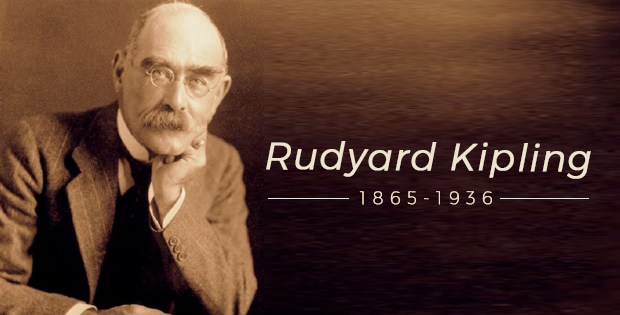Joseph Rudyard Kipling, born in British Indian on 30 December 1865, was an English journalist, short-story writer, novelist and poet. He died on January 18, 1936, in London, England. Some of the famous work of Kipling’s include The Jungle Book, Kim, and many short stories like, “The Man Who Would Be King”. The Poems include “Mandalay”, “Gunga Din”, “The Gods of the Copybook Headings”, “The White Man’s Burden”, and “If”. Kipling’s work is appraised and noted by famous critics, some of the critics, describe his work as manifesting “a versatile and luminous narrative gift”. Rudyard is also viewed as a significant innovator in the art of the short story.
Early Life of Rudyard Kipling
Kipling was born in Bombay (then Bombay Presidency of British India), to Alice Kipling and John Lockwood Kipling.
Kipling’s life in India was only till at the age of 5. As a tradition for the children of Britishers who were serving in India, were moved to Britain, so Kipling and his 3-year-old sister, were boarded with a couple; Captain Pryse Agar Holloway, and Sarah Holloway, in Lorne Lodge, at Southsea.
Kipling was later admitted to the United Services College at Westward Ho. Devon, a school, founded a few years earlier to prepare boys for the army. The school proved rough going for him in the beginning, but later led to strong friendships and provided the background for his schoolboy stories Stalky & Co. (1899). During his tenure there, Kipling also met and fell in love with Florence Garrard. Florence Gerrard was also the model of his first novel “The Light that Failed” (1891).
During the end of his education, Kipling failed to get into the Oxford University through scholarship, and his father did not have the financial means to admit him, so, Kipling returned to India. His father had got him a job of principal at Mayo College of art, in Lahore, Kipling was also Curator of the Lahore Museum. Kipling was then to be the assistant editor of a small local newspaper, the Civil and Military Gazette.
From 1883 to 1889, Kipling worked in British India for local newspapers such as the Civil and Military Gazette in Lahore and The Pioneer in Allahabad. Kipling was removed from The Pioneer in early 1889, after a dispute. By this time, he had frequently been thinking about the future. Kipling sold the rights to his six volumes of stories for £200 with a small royalty, and the Plain Tales of £50, and from The Pioneer, he received six-month’ salary instead of notice.
Kipling used this money to make his way to London. On 9 March 1889, Kipling left India, travelling first to San Francisco via Rangoon, Singapore, Hong Kong, and Japan. He specially mentioned all these places and people of these cities in his short stories and poems.
Personal Life of Rudyard Kipling
On 18 January 1892, Carrie Balestier (aged 29) and Rudyard Kipling (aged 26) got married in London. They had two daughters Josephine and Elsie Kipling; it was his daughters that gave him the idea of kids story books like Jungle Book and Just So Stories (a collection of kids stories), was written by him for his daughters.
Later, Kipling dedicated himself to literature. He traveled several countries and cities during this time. In 1907, he was honored with the Nobel Prize for Literature after having been nominated in that year by Charles Oman, a professor at the University of Oxford.











































